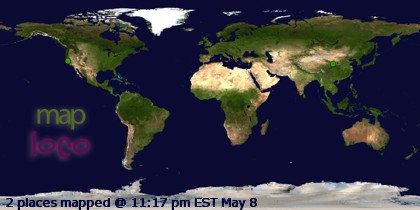My 2nd installment in a "Better Know A Country" series, is the smallest sovereign nation in South America: Suriname. ˈsɜrɨnɑːm/ (Dutch: Suriname, Dutch pronunciation: [ˌsyriˈnaːmə]; Sarnami: शर्नम् Sarnam, Sranan Tongo: Sranangron or Sranankondre), officially the "Republic of Suriname". It's adjacent to French Guiana (where the Europeans launch their rockets into space), Guyana (famous for their mosquitoes, and for not yet visiting JustJoeP's blog), and Brazil (famous for nuts, rain forest destruction, sugar cane ethanol, and carnival). But what is Suriname, a tropical, equatorial, coastal country of less than 1/2 a million people famous for?
Well, it's official language is Dutch, since it used to be a Dutch colony, but there's a plethora of other regional languages spoken, including (and surprising to me) Hindi, Urdu, Tongo, Malay, Javanese, and Cariban. Dr Desert's Flower's previous boss's life partner was from Suriname, and we shared a drink with Carlos in Amsterdam last July as he was coincidentally staying in the same hotel as we were staying during a scientific conference on cancer. Carlos is a nice guy, and the only Surinamese person I've ever met. (sample size n=1).
While it was a Dutch colony, the Dutch loved the bauxite that Surinamese mines produced, and coveted the mineral even after independence. The slaves of Suriname were freed in 1863 (2 years after South Carolina seceded from the Union) but the Dutch imposed a 10 year transition period where slaves were paid to continue working on farms for minimal wages, so they were not fully freed until 1873. Prior to the Dutch, the French, Spanish, and English all had Suriname as a colony, but the treaty of Breda in 1667 ceded Suriname from the British to the Dutch. Plantation crops produced by slave labor in the colonial periods included coffee, cocoa, sugar cane and cotton. Today, Suriname mines gold, drills for oil, grows bananas & rice, and has some eco-tourism - but the gold & oil industries will eclipse that as they grow and consume the 80% of pristine rain forest that comprises the majority of Suriname's land mass.
Paramaribo is the capital city, and the only major airport internationally to which one can fly.
10 years ago



What's their cuisine like?
ReplyDeleteThough I've not personally had any, I hear that it can be quite tasty and includes tropical ingredients.
DeleteSome typical Surinamese dishes include:
1. Pom, a chicken dish made with tayer
2. Pastei, a creole-style chicken pot pie
3. Dhal, a lentil stew
4. Roti - grilled flatbread
5. Curry Dishes, like this chicken curry (Massalakip)
6. Vegetables with Peanut Sauce (gado-gado style Indonesian dish)
7. Bakbana - fried plantain with peanut sauce
8. Goedangan - mixed vegetable salad with coconut dressing
9. Coconut Desserts
10. Bojo cake - made with coconut and cassava
11. Phulauri (fried lentil or chickpea balls)
12. Mango Chutney
For more information, one can look here:
http://www.tropilab.com/surinamkitchen.html
and here:
http://www.foodofsouthamerica.com/suriname-food.htm
Interesting variety.
ReplyDeleteWoo whooo! Got our first Suriname visitor, from the Capitol city of Paramirabo no less, this week! Just one remaining country in South America who's never visited JustJoeP.
ReplyDeleteIt's all about the content =)